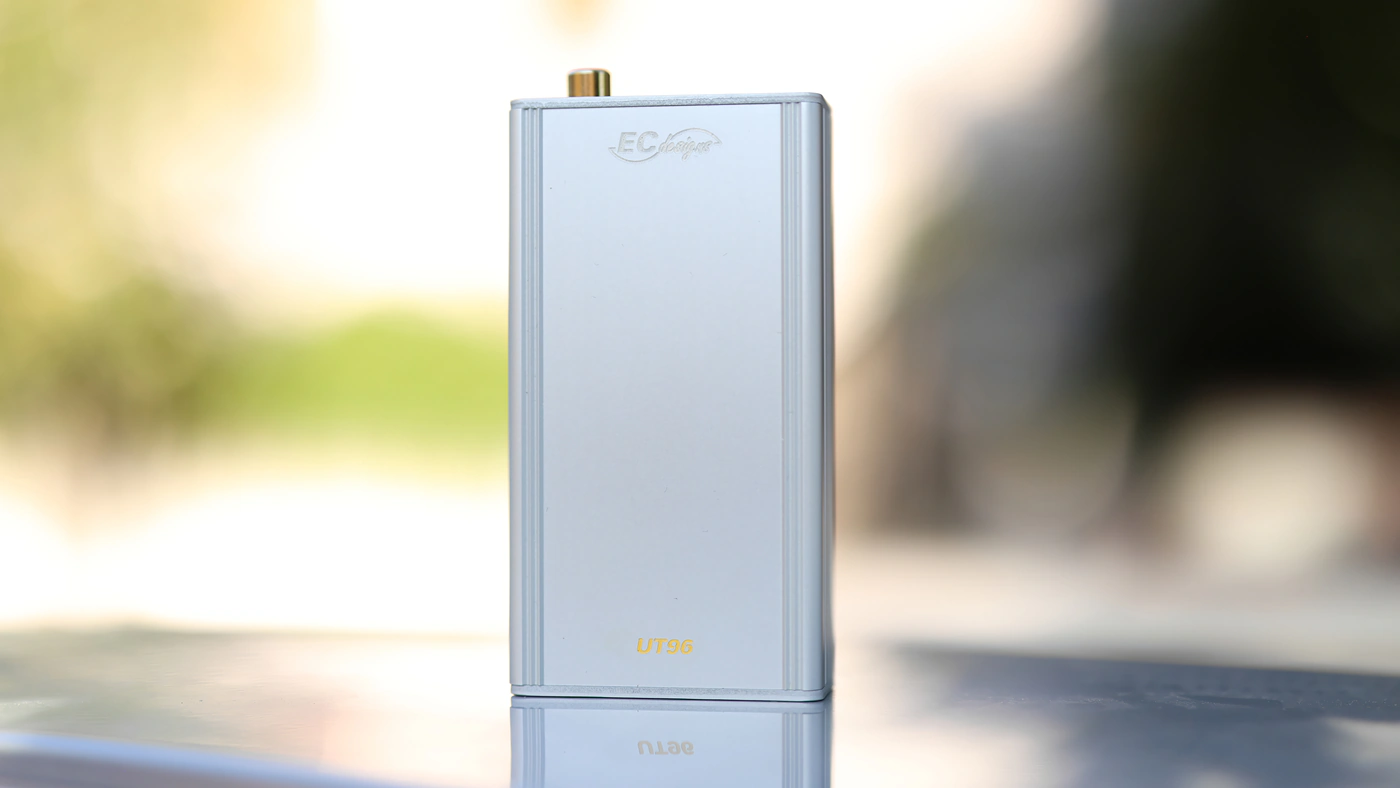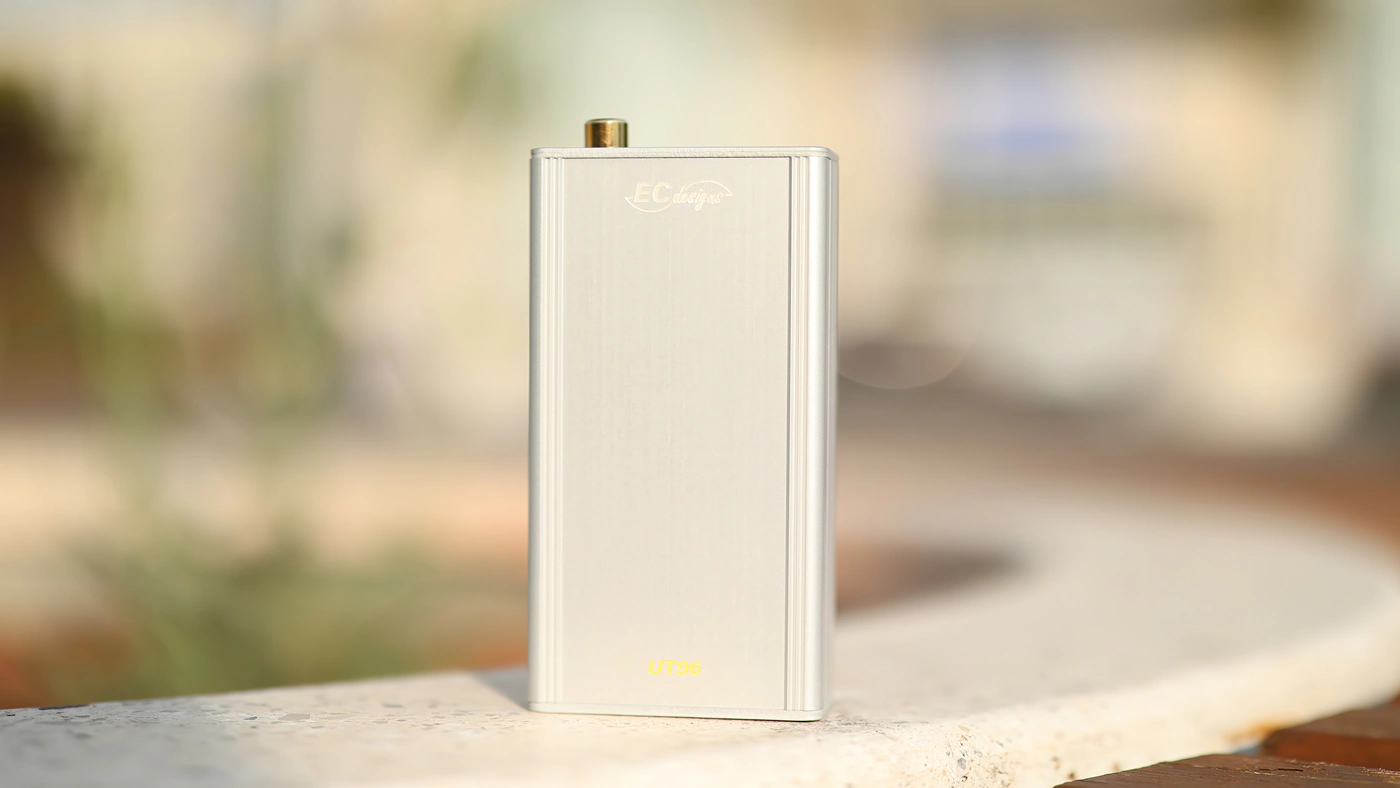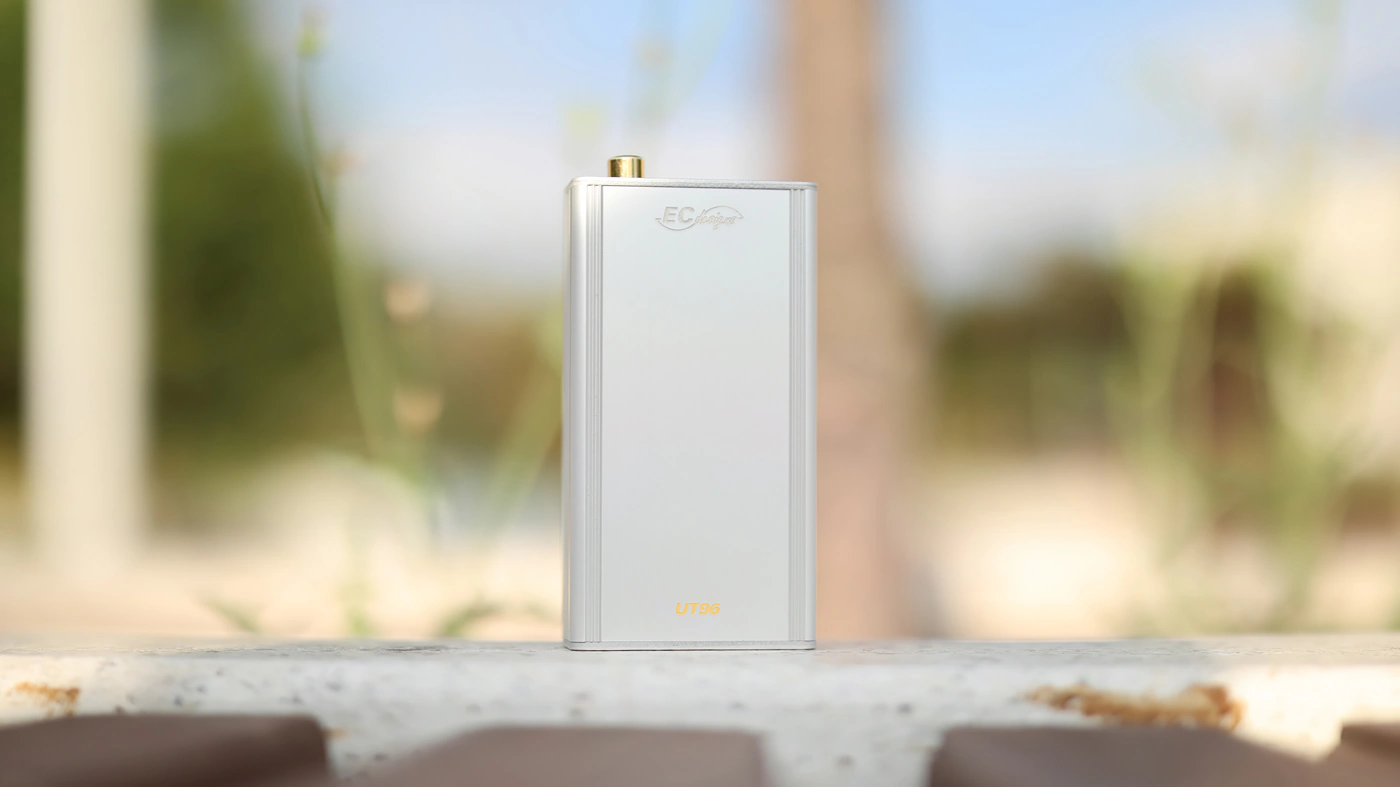ECDesigns UT96 and UT192 USB Toslink Converters – Digital Magic ElectroTos Transformation
ECDesigns UT96 and UT192 are a $125 USD and $325 USD USB to Toslink converters that work with all ECDesigns DACs, as well as any other DAC out there, basically doing a stellar job at converting a USB digital signal to an Optical Signal. We will explore UT96 and UT192 and what the difference between them is, as well as how each sounds like. As a little bonus, we will revisit the performance of the ECDesigns PowerDAC-SX and how it sounds when powered through the unique ElectroTos cable, which takes in a coaxial signal from the UT96 or UT192 and converts it to Optical, with a different approach.

Introduction
ECDesigns is a company focused on creating innovation and run by two brothers, John and Gordon Brown. ECD stands for Electronic Custom Designs and the company specializes in designing custom PCBs and computers, with the latest focus for the company being in designing the ultimate DAC. Through all the research, the result is currently the PowerDAC-X and PowerDAC-SX is ultimately the best DAC solution designed by the company, which skips the analog amplifier and directly drives speakers with nothing more than a power supply voltage, resistors and switches, for the perfect sonic reproduction. As an Amazon Influencer, I earn from qualifying purchases, and using the purchase links in my reviews helps me maintain this website and Youtube Channel. Huge thanks to Keces for providing us with the sample for this review.

PROs – Solid and reliable build quality, exceptionally good performance with very low USB Delay, and an innovative design for the ElectroTos cable. In fact, I have not been able to find a single other company selling the ElectroTos cable, making Designs the sole developer of the new tech.
Cons – Despite a much lower price, UT96 is much easier to recommend.
Product Link
Official Link – https://ecdesigns.nl/product/ut96/
Build Quality/Aesthetics
Although PowerDAC-SX is the ultimate DAC designed by ECDesigns, it has only one optical input, so it needs an optical signal to work, while most sources we typically use have a USB output, like a computer, or streamer. To actually give you the best sound possible for a complete setup, ECDesigns employs two USB To Optical converters, namely the UT96 and UT192, both being simplistic USB To Toslink converters, with a software generated s/pdif output using a single microcontroller + clock

On paper, the difference between them is that UT96 supports data rates of 44.1 kHz, 48 kHz, 88.2 kHz and 96 kHz, with a word-length of 16 and 24 Bit. UT192 has basically the same design as UT96, but it also employs support for 176.4 kHz, and 192 kHz, extending the Hi-Res support for those who have an extensive Hi-Res library.

Enter the ElectroTos cable, this is a new digital audio interface compatible with the TosLink and s/pdif protocol, which maintains a low noise and a low jitter. It connects to the source coaxial output via an RCA connector, and it has an optical connector compatible with the Toslink input on the dac side. This combination of electrical interface that ensures low jitter and optical interface which has a low noise and eliminates ground loops draws advantages of both worlds.

The best USB to ElectroTos converter available on the market is ECDesigns UT96, and ElectroTos is a connection that needs a higher signal level compared to existing Optical converters. UT96 has just enough power to generate the s/pdif signal using the standard USB 1.1 (12MBps) full speed USB interface. This simple combo is even more reliable and cleaner than higher-speed variants like UT192. ECDesigns posted a clear measurement of the signal, showing a far cleaner and more reliable signal when using the ElectroTos cable compared to a standard s/pdif signal, which you can explore here – https://ecdesigns.nl/2024/04/24/electrotos/ .
Subjective Usage
Subjectively, both Ut96 and UT192 serve a similar function, and both will take the USB input form your computer to convert it to spdif optical or coaxial signal. I initially did not know what the ElectroTos cable is, what it does and how to use it. The reason for this is that the electroTos cable is flat, and the connector has to be inserted mostly diagonally angled in the optical input of the DAC, like PowerDAC-SX. This looks very odd at first, but it actually fits in there snuggly, and the sound is reliable, so the actual usage is as good as it is supposed to be.

Besides the sonic differences between using optical and coaxial electrotos, there are some key differences to using UT96 instead of other interfaces. The story is actually quite funny, as I was reviewing the powerDAC-SX and I started noticing a huge DAC delay and could not watch movies or music videos using it.

I contacted ECDesigns and asked if this is normal, and they told me it is not normal, but the interface used could be causing it, and after careful inspection I found out that it was indeed the interface, at that point a Creative Sound Blaster AE-9 SoundCard, which was causing the delay.

Testing both UT96 and UT192 shows no USB DAC delay that I can notice, so I expect it to be below 50ms, so less than two frames of content for a standard movie, while Creative AE-9 shows a considerable delay, up to 500 ms or more, and at half a second of delay, I found that a high-quality USB to Optical or USB to Coaxial cable is needed.

The novel ElectroTos Cable is actually quite easy to use, you just plug in the cable into UT96 with the RCA Coaxial end, and the optical cable in the PowerDAC-SX, and you’re good to go. There’s nothing else you have to do, and the setup works flawlessly.
Sound Quality
Pairings – I have mainly used the UT96 and UT192 with PowerDAC-SX, and the ElctroTos cable in between. I have used my PC computer as the source, and PowerDAC-SX has been connected to either Pylon Audio Diamond 30 mkii, audience clairaudient 1+1 v5 Speakers, or NHT C3, using a pair of Ricable Dedalus Invictus Speaker Reference cables in between.

Overall Signature – There is quite a drastic increase in the resolution and clarity when using the UT96 compared to entry-level interface converters like Creative Ae-9, and there’s an even more significant increase in resolution and clarity when using the ElectroTos cable instead of a basic Optical cable, but ElectroTos is basically compatible just with UT96, or high-end digital converters, as Coaxial is not a very common output, and the converter needs to have a strong signal to produce the sound at the end of the ElectroTos cable. I have noticed that for this purpose alone, and in general, UT96 is actually a bit better than UT192 for reliability, and regardless of the data rate, if you don’t listen to a lot of hi-res music, UT96 should be a better option from a price / performance perspective.

To make it a little more clear, here we’re reviewing the sonic performance of UT96 + ElectroTos cable, used in a combination, rather than either alone. This is because only when using each, you get the most significant upgrade in sonics, and the most audibly powerful result. Otherwise, you could try to use UT96 with a standard optical cable, but you would have to live knowing there is sonic improvement to be had that you’re missing on.

Bass – Starting with the bottom end, we have a deep and rounded bass, with very high contrast and substance. Using the ElectroTos, each bass impact seems to be more stable, more punchy and the low-end extension presents a more voluptuous and deeper impact to each song.

The difference is most evident in the transparent response and texture, as bass seems to be faster and more accurate when using both UT96 and the ElectroTos cable compared to using any other Optical interface and a standard optical cable.

Midrange – We can hear the biggest upgrade in the midrange, where voices seem to sound sweeter, and resolution is increased, with a more detailed texture and higher level of micro details with a more holographic, wider and more precise staging. There is a higher definition to layering and instrument separation, while instruments presented as part of the background are far better defined with more information revealed to the listener.

Treble – Despite the upgrade in the midrange and the bass, treble is vastly the same when PowerDAC-SX is combined with either Pylon Audio Diamond 30 MKII or audience ClairAudient 1+1 V5, as both have mostly the same treble extension and character, and at times the treble feels smoother, softer and a bit more refined, and less aggressive rather than brighter or sharper.

At any rate, the difference makes music easier to enjoy for longer periods of time, and despite the higher level of details, there is no added fatigue to the listening experience of either of my favorite speakers.

Dynamics / PRaT / Textures – There is no difference in the loudness control, but the Dynamic range is higher when using the UT96 and the ElectroTos cable compared to using Creative AE-9 and other USB To Optical interfaces, as the textures are revealed more clearly by the UT96, and the ElectroTos cable in particular seems to improve the dynamics, making the sound punchier and cleaner, more defined and also more precise.

Soundstage – If you want to hear a wide, holographic stage, UT96 can aid with this, and while I generally found the optical interface to be softer and more intimate than USB for most system,s UT96 sounds much wider and has a stronger layering, better instrument separation than most optical capable interfaces. Sing the ElectroTos cable seems to also help quite a bit with creating this stronger definition for each layer.
Value and Conclusion
While ECDesigns PowerDAC-SX still sits comfortably at the center of my listening rig, and you will likely still see it there for years to come, I have to congratulate ECdesigns for also creating the right USB to Toslink converters to signal the DAC, and also for creating a novel coaxial to optical ElectroTos cable that is actually high quality, and despite the odd design at first, has a beautiful, detailed sound and a better clarity than optical cables.

At the end of the day, regardless whether whether you’re already using the ECDesigns PowerDAC-SX or another DAC, and if you need optical, you will most definitely love the performance of the UT96 and UT192, but the most surprising product of today’s review has been the electroTos cable which can improve your sound considerably and is also backed by scientific proof.
Product Link
Official Link – https://ecdesigns.nl/product/ut96/
--- Please remember to stay safe, and always have fun while listening to music!---
- If you have a dime to spare, please donate, and help us! It would make the day brighter for me and my wife-
Full Playlist used for this review
We listened to more songs than those named in this playlist, but those are excellent for identifying a sonic signature. I recommend trying most of the songs from this playlist, especially if you’re searching for new music! The playlists are different for Spotify, Tidal and Youtube, and based on the songs I enjoy and are available on each!
https://www.youtube.com/playlist?list=PL_cjBXGmwSHSdGcwuc_bKbBDGHL4QvYBu
https://open.spotify.com/playlist/5J3oloz8Riy9LxEGenOjQ0?si=979ba4f082414be7
https://tidal.com/browse/playlist/330fd544-8e5b-4839-bd35-676b2edbb3d5
--- Contact Us ---






I found the comments about the reliability of the higher bit rate converter confusing. I think it would have been better if you had explained how the electro-tos cable works – having an electrical connection all the way to the input of the dac where an led is used to produce the optical signal. This means there is no distortion of the optical signal which may otherwise be affected by properties of the optical fibre – reflections etc.
I can note on what effect I notice it has, but, this is the only ElectroTos product that I ever reviewed and I did not find enough data to make a more detailed technical article about it.
In terms of sound quality, please can you explain me.
Is there difderence beetwen UT96 and UT192?
They should sound the same
It probably has to do with the Xmos chip and associated circuitry in the ET192.
Yes, most likely